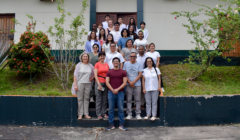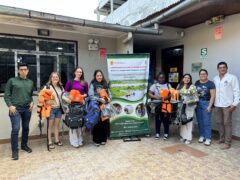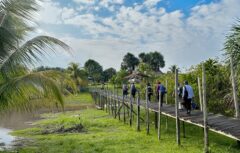Uta or leishmaniasis: How it is transmitted, symptoms and treatments to combat this disease
Published on:
Written by :
Leishmaniasis, known as Uta in the country, is a public health challenge in Peru and other parts of the world, including Latin America. Although no commercially available vaccine exists, preventive measures and effective treatments are available.
This disease, transmitted by the bite of a mosquito present throughout the country, is caused by the leishmania parasite, which causes «lesions on the skin, causes a little itching, is painless, does not heal after about three days, but persists for weeks and turns into a wound.» This fact was explained by Dr. Fiorela Alvarez, a specialist in infectious and tropical diseases and researcher of the Leishmania and Malaria Unit of the Alexander von Humboldt Institute of Tropical Medicine, in the program Podcast Médico en Cayetano+, conducted by Dr. Coralith Garcia.
She added that leishmaniasis is a zoonotic disease that can be transmitted between humans and animals. The most affected regions are in the highlands and jungle, mainly in rural areas dedicated to agriculture and livestock. For example, a short distance from Lima, «we have Antioquia, Huarochiri. Therefore, in these areas, especially rural or peri-urban areas, where there is a lot of contact with nature and the countryside, the presence of this mosquito is more common,» added Dr. Alvarez. At the forefront of this problem are Cusco and Madre de Dios, where there is a more significant number of cases. It is also present in Cajamarca and even in the highlands of Piura.
According to Dr. Alvarez, some people with uta resort to traditional methods in their attempt to cure themselves. For example, they apply heat to burn the lesions, use different types of plants, or other extreme methods. Ultimately, the lesions become infected and complicated, «that is why the ideal thing to do is go to the health post.»
The doctor warned that leishmaniasis can become complicated if not treated early. It could lead to partial or complete deterioration of the mucous membranes of the nose and mouth, or it could even affect other organs besides leaving scars.
«There is a form, which fortunately we don’t have in the country, that affects internal organs such as liver or spleen, that is potentially fatal. There are cases in Asia or Brazil. While in Peru, we only have skin and mucous membrane lesions.»
Leishmaniasis is diagnosed by physical examinations and laboratory tests, including a microscope examination to search for Leishmania parasites and analyzing tissue samples affected by skin lesions.
«To obtain the material, a tissue sample from the lesion’s edge is taken; it is placed on a slide in the microscope, and special tensions are made. With trained personnel, this test takes no more than forty minutes. If the parasite is observed, then there is no doubt that we are dealing with a case of leishmaniasis. With this test, the diagnosis is confirmed,» she said.
Medical professionals with experience managing this disease must diagnose and treat leishmaniasis since the treatment may vary according to the clinical form and severity of the infection.
Some considerations to consider:
- Prevention includes vector control, and insecticide application is essential to reduce the population of the insects responsible for transmitting the disease.
- For locals and foreigners, wearing clothing that covers most of the body and applying insect repellent as often as necessary can help prevent bites from transmitting insects.
- It is recommended that pets or livestock be protected indoors at night to avoid mosquito bites.
- If you have, or suspect you have, Uta, go to a health center for treatment. Do not let time pass because the ulcer will develop into a severe infection.
- After treatment, it is critical to comply with medical indications and follow up to ensure the infection has been completely eliminated.
In Peru, as in other countries affected by leishmaniasis, continued collaboration between the government, health professionals, and the community is crucial to implementing effective prevention and treatment strategies and promoting research into new therapeutic options and an eventual vaccine against leishmaniasis.









